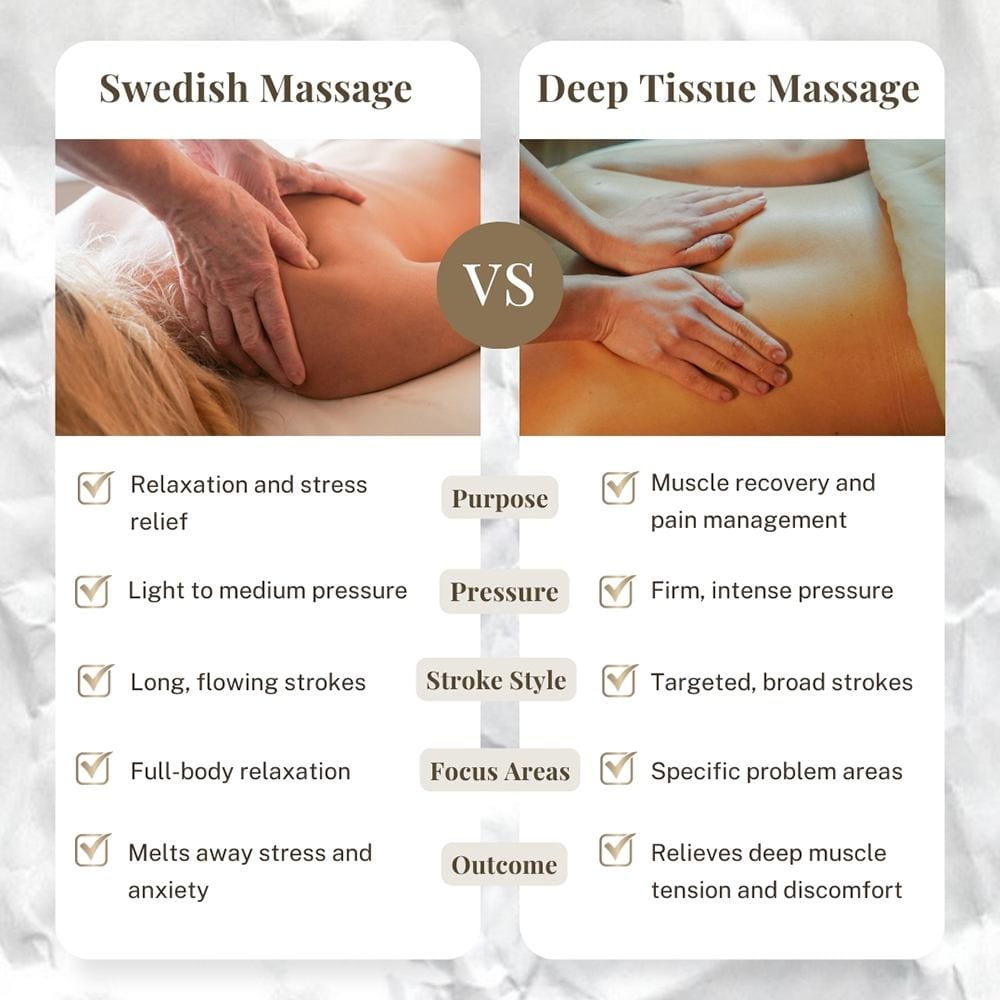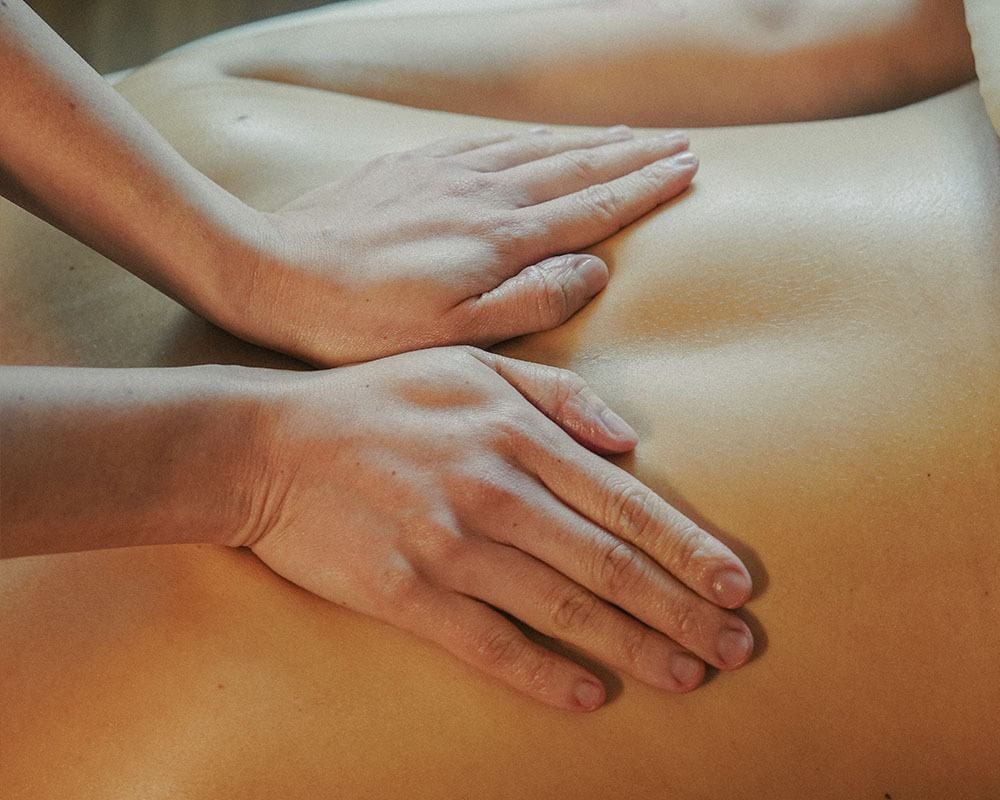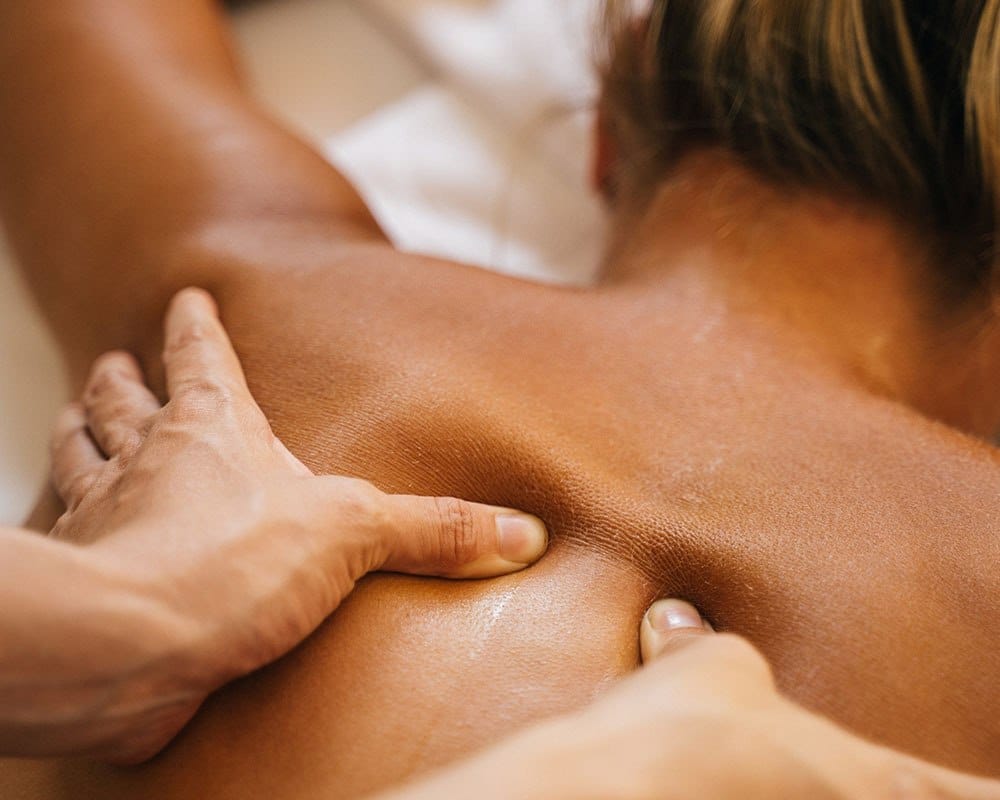Table of contents

With its powerful elements and thoughtful benefits, the impact of massage in healthcare cannot be underestimated. Swedish and deep tissue massage are two popular types of massage therapy that differ in pressure, technique, intended use, and focus areas. Swedish massage is calming, gentle, and great for full-body relaxation. Deep tissue massage goes in depth, targeting problem areas of chronic muscle tightness and tension.
Read on to learn more about these two types of massage therapies, key differences between them, and which one may be the right option for you.
What Is a Swedish Massage?
It is a popular massage technique that promotes overall relaxation and improves circulation using a combination of gentle, long strokes, kneading, friction, tapping, and circular movements on the muscle’s surface. The technique is also known as the classic massage technique.
The goal of Swedish massage is to relieve muscle tension, increase oxygen flow in the blood, and enhance the body’s flexibility. It is the preferred massage for reducing stress, easing muscle soreness, and promoting overall wellness that leaves you refreshed, recharged, and at ease, both mentally and physically.
Swedish massage is the perfect choice for beginners or anyone seeking a soothing, full body massage experience.
Related article: What To Know About Swedish Massage
What to Expect During a Swedish Massage?
 Swedish massage focuses on stimulating the nervous system. It nurtures the skin, which soothes the nerves, and reduces physical and emotional tension. The therapist uses long kneading strokes and deep circular movements to increase the flow of oxygen into the bloodstream, which helps flush lactic acid and uric acid from the body.
Swedish massage focuses on stimulating the nervous system. It nurtures the skin, which soothes the nerves, and reduces physical and emotional tension. The therapist uses long kneading strokes and deep circular movements to increase the flow of oxygen into the bloodstream, which helps flush lactic acid and uric acid from the body.
Swedish massage is gentler than deep tissue massage. It is a better option if you seek a pampering session or full mind-body relaxation.
Who Should Go for a Swedish Massage?
Swedish massage is for almost anyone looking forward to relaxing and improving their overall wellness.
It is best for:
- Massage beginners – It is a gentle and approachable starting point, and helps them get accustomed.
- People who deal with stress and anxiety – Calming techniques soothe the nervous system and result in deep relaxation.
- People who experience muscle tension and mild soreness – It eases tightness from everyday activities or poor posture.
- Older adults or athletes who want to improve flexibility – The flowing strokes stimulate the flow of blood, circulation, and loosen muscles.
- People recovering from light physical strain – It supports muscle recovery without deep pressure
It is important to note that people with certain medical conditions, such as blood clots, infections, or recent surgeries, should consult their doctor before scheduling a massage.
What Is a Deep Tissue Massage?
 Deep tissue massage is a therapeutic massage technique that focuses on the deeper layers of muscles and connective tissues. It is a bit more intense than Swedish massage and applies firm pressure and slower movements to target chronic muscle tension, stiffness, and knots, also known as adhesions.
Deep tissue massage is a therapeutic massage technique that focuses on the deeper layers of muscles and connective tissues. It is a bit more intense than Swedish massage and applies firm pressure and slower movements to target chronic muscle tension, stiffness, and knots, also known as adhesions.
A deep tissue massage is particularly effective for:
- Treating chronic aches and pain in various parts of the body, such as the neck, shoulders, or lower back
- Easing muscle tightness that results from overuse or repetitive movements
- Correcting postural problems or sports-related injuries
- Breaking up scar tissue and improving mobility
It is important to know that while a deep tissue massage can be intense, it should never be painful. An experienced therapist adjusts pressure to your comfort level to ensure the treatment is safe, as well as effective.
What to Expect During a Deep Tissue Massage?
During a deep tissue massage, the skilled therapist digs a little deeper into the muscles using stroking and kneading movements with a higher degree of pressure. It might feel intense, but it should not hurt. You will feel a satisfying release of tension, and the muscles pushing back against the pressure.
Before the massage:
- The therapist will ask about your health history, specific areas of tension, and the level of pressure you can withstand
- You will be asked to undress to the level you will be comfortable with
- You will lie down on a massage table, covered with a sheet or towel, to help the therapist access only the area being worked on
During the massage:
- The therapist will start with lighter strokes to warm up your muscles
- Gradually, they will increase the intensity, applying firm pressure using their fingers, knuckles, elbows, or forearms to reach the problem areas
- You may feel some discomfort or good pain in areas with chronic tension or knots, but it should be tolerable. If the pressure is too much, inform your therapist.
After the massage:
- You might feel a little sore, like you feel after a workout. However, this is normal and subsides within a few days.
- Drink plenty of water to flush out released toxins and support muscle recovery
- You will notice improved range of motion, less stiffness, and a deep sense of relaxation in your body
Related article: Everything you need to know about getting a sports massage
Who Should Go for a Deep Tissue Massage?
Deep tissue massage works well for individuals who require more than just light relaxation.
It is suitable for:
- People who suffer from chronic muscle pain or tension
- People who have stiff necks, shoulders, or lower backs
- Athletes suffering from sports-related injuries or overuse of muscles
- Office workers who develop postural issues after long hours of sitting and standing
- Patients who have developed scar tissue and muscle tightness from past injuries
Anyone who feels their muscles are locked up and needs deeper work can benefit from a deep tissue massage.
Are Swedish Massage and Deep Tissue Massage the Same?
No. While a deep tissue massage is similar to a Swedish massage in its basic techniques, it uses more pressure on the deepest parts of tight muscles. Swedish massage is typically lighter and aims to relax, while deep tissue massage focuses on addressing chronic muscle tension, knots, and specific areas of discomfort. Both styles use long strokes and kneading, but deep tissue massage works more slowly and deliberately to reach underlying problem areas.
Athletes seeking targeted relief from pain and stiffness may find deep tissue techniques more effective, while people who seek a restorative, stress-reducing session can opt for Swedish methods.
Swedish Massage vs Deep Tissue Massage
While both Swedish and deep tissue massages offer powerful therapeutic benefits, they are designed to meet very different needs, from relaxation and stress relief to deep muscle recovery and pain management.
Some distinct differences between the two massage therapies include:
- Intention: Swedish massage focuses on relaxing the body and relieving tension. On the other hand, deep tissue massage is more rigorous and eases muscle tension and pain.
- Treatment goals: The goal of Swedish massage is relaxation, while deep tissue massage offers relief from pain and discomfort.
- Stroke style: Swedish massage focuses on longer, more fluid strokes, while the deep tissue massage technique uses more targeted and broad strokes.
- Areas of focus: Swedish massage is a relaxing, full-body experience. Deep tissue massage usually focuses on the problem areas.
- Pressure: This is the major difference between Swedish massage and deep tissue massage. A Swedish massage uses light to medium pressure, while a deep tissue massage uses firm pressure.
- Intended outcome: After a Swedish massage, you should feel as if your stress and anxiety have magically disappeared. After a deep tissue massage, you should experience the calming effects of the deeper bodywork.
These differences in technique, pressure, stroke style, and purpose can impact treatment outcome. Whether you choose Swedish massage or deep tissue massage, expert therapists work to soothe stress and melt away tension, leaving you feeling comfortable and cozy.
If you are ready to explore massage and its benefits, call ila Only Spa and schedule an appointment today to find out which type of would work best for your specific needs. Our trained therapists help you choose the right treatment and provide an extraordinary massage experience that would leave you truly refreshed and recharged. They employ the best techniques and methods to work out those knots and kinks for you and give you the deep sense of relief and relaxation you crave.

